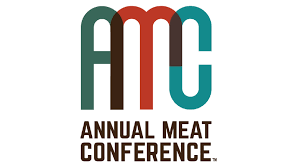Helping Seaway Heavy Lifting enhance its safety culture, making an already good safety program better
Leadership at a tier-two energy company overcame doubts to become Incident and Injury-Free™ (IIF™) safety champions



Leadership at a tier-two energy company overcame doubts to become Incident and Injury-Free™ (IIF™) safety champions
Netherlands based Seaway Heavy Lifting (SHL) is an independent offshore contractor with experience in the transport, installation and removal of offshore oil and gas platforms, subsea structures, and the installation of wind turbine foundations. The company operates two large crane vessels.
JMJ’s relationship with Seaway began when a contract they signed with a major energy company mandated Incident and Injury-Free™ (IIF) safety training for all SHL personnel working on the project. Managers were also required to attend an IIF Commitment Workshop™ facilitated by JMJ. Believing they already had a good safety program and fearing that the oil and gas major would impose its own safety systems on them, SHL’s leadership didn’t meet this request with enthusiasm. However, when the COO reluctantly attended the workshop, describing himself as, “a prisoner,” he was surprised to learn that, rather than a set of rules, IIF was about leadership, relationships, and personal commitment. By the end of day one, he was an IIF champion!



After the leadership workshop, SHL agreed to implement IIF across the organization. With lifting operations and suspended loads always in the top 10 identified safety risks, Seaway’s goal was to enhance its organizational performance and safety culture and create an Incident and Injury-Free™ (IIF™) working environment. This meant personnel onboard the vessels, in their offices, and subcontractors were all required to attend JMJ’s IIF workshops and orientation. This policy met with some initial resistance. Leadership’s own visible commitment to safety played a big part in breaking down this skepticism and convincing people that they were prepared to walk the walk. Today, SHL has its own employees as IIF trainers. Training extends to every new employee, every subcontractor that comes on board a vessel and even clients if they come on board.
People at every level across the organization are aligned with leadership’s commitment to make SHL a safe place to work, despite the challenging conditions they are often confronted with. The safety transformation strengthened the company’s position in the market and enhanced its reputation for being reliable, efficient, and always putting safety first. Employee engagement with safety has been measured extremely high compared to other organizations both in and outside the industry, and safety statistics have improved. Incident and Injury-Free is now an integrated part of the organization.